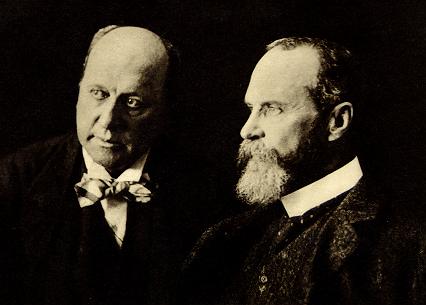"Welcome to 2009. This is a year in which the fate of the world economy will be determined, maybe for generations. Some entertain hopes( THE SAVER/EXPORT COUNTRIES ) that we can restore the globally unbalanced economic growth of the middle years of this decade. They are wrong. Our choice is only over what will replace it. It is between a better balanced world economy and disintegration. That choice cannot be postponed. It must be made this year.
We are in the grip of the most significant global financial crisis for seven decades. As a result, the world has run out of creditworthy, large-scale, willing private borrowers. The alternative of relying on vast US fiscal deficits and expansion of central bank credit is a temporary – albeit necessary – expedient( I AGREE ). But it will not deliver a durable return to growth. Fundamental changes are needed.( SUCH AS? )
Already it must be clear even to the most obtuse and complacent that this crisis matches the most serious to have affected advanced countries in the postwar era. In a recent update of a seminal paper, released a year ago, Carmen Reinhart of Maryland University and Kenneth Rogoff of Harvard spell out what this means.* They note the similarities among big financial crises in advanced and emerging countries and, by combining a number of severe cases, reach disturbing conclusions.
Banking crises are protracted, they note, with output declining, on average, for two years. Asset market collapses are deep, with real house prices falling, again on average, by 35 per cent over six years and equity prices declining by 55 per cent over 3½ years. The rate of unemployment rises, on average, by 7 percentage points over four years, while output falls by 9 per cent.
Not least, the real value of government debt jumps, on average, by 86 per cent (see chart). This is only in small part because of the cost of recapitalising banks. It is far more because of collapses in tax revenues.( THESE STUDIES HAVE LIMITED USE )
How far will the present crisis match the worst of the past? The continuing willingness of the world to finance at least the US – though not necessarily the smaller and more peripheral deficit countries, such as the UK – is a reason for optimism. It does allow the US government to mount a vast fiscal and monetary rescue programme.

Yet, as Profs Reinhart and Rogoff note in another paper, this is a global crisis, not a regional one (see chart).** It has reminded us that the US is still, for good or ill, the core of the world economy( TRUE. IT'S GLOBAL BECAUSE IT STARTED IN THE US ). In the big crises of recent decades, US demand has rescued the world. This was true during the 1990s, after the Asian crisis, and again after the stock market crash of 2000. But who, apart from its government, will rescue the US? And on what scale must it act?( VERY LARGE )
This issue is addressed in another seminal paper, the latest in the series co-written by Wynne Godley and two others for the Levy Economics Institute of Bard College.*** The underlying argument is one with which readers of this column should, by now, be all too familiar.
What makes rescue so difficult is the force that drove the crisis: the interplay between persistent external and internal imbalances in the US and the rest of the world. The US and a number of other chronic deficit countries have, at present, structurally deficient capacity to produce tradable goods and services. The rest of the world or, more precisely, a limited number of big surplus countries – particularly China – have the opposite. So demand consistently leaks from the deficit countries to surplus ones.
In times of buoyant demand, this is no problem. In times of collapsing private spending, as now, it is a huge one. It means that US rescue efforts need to be big enough not only to raise demand for US output but also to raise demand for the surplus output of much of the rest of the world. This was a burden that crisis-hit Japan did not have to bear.
What has happened to US private spending follows from the collapse in borrowing: between the third quarter of 2007 and the third quarter of 2008 net lending to the US private sector fell by about 13 per cent of gross domestic product – by far the steepest fall in the history of the series (see chart). With borrowing out of the picture, private net saving – the difference between income and expenditure – is likely to remain positive for years, as households pay down debt, willingly or not.
Given the persistent structural current account deficit, how large does the fiscal deficit need to be to balance the economy at something close to full employment? Assuming, for the moment, that the private sector runs a financial surplus of 6 per cent of GDP and the structural current account deficit is 4 per cent of GDP, the fiscal deficit must be 10 per cent of GDP, indefinitely.
And to get to this point the fiscal boost must be huge. A discretionary boost of $760bn (€570bn, £520bn) or 5.3 per cent of GDP is not enough. The authors argue that “even with the application of almost unbelievably large fiscal stimuli, output will not increase enough to prevent unemployment from continuing to rise through the next two years”.
Now think what will happen if, after two or more years of monstrous fiscal deficits, the US is still mired in unemployment and slow growth. People will ask why the country is exporting so much of its demand to sustain jobs abroad. They will want their demand back( OR THEY WILL ALLOW US TO DEFAULT ). The last time this sort of thing happened – in the 1930s – the outcome was a devastating round of beggar-my-neighbour devaluations, plus protectionism( WE HAVE SOME OF THAT ALREADY. ). Can we be confident we can avoid such dangers? On the contrary, the danger is extreme. Once the integration of the world economy starts to reverse and unemployment soars, the demons of our past – above all, nationalism – will return( I THINK THAT HE'S THE FIRST PERSON I'VE READ WHO AGREES WITH ME ON THIS. ). Achievements of decades may collapse almost overnight.
Yet we have a golden opportunity to turn away from such a course. We know better now. The US has, in Barack Obama, a president with vast political capital. His administration is determined to do whatever it can. But the US is not strong enough to rescue the world economy on its own. It needs helpers, particularly in the surplus countries( SAVER COUNTRIES ). The US and a few other advanced countries can no longer absorb the world’s surpluses of savings and goods. This crisis is the proof. The world has changed and so must policy. It must do so now.( IT'S GOING TO BE TOUGH FOR THE SAVER/EXPORT COUNTRIES. )
* The Aftermath of Financial Crises, December 2008; www.economics. harvard.edu/faculty/rogoff/files/ Aftermath.pdf; ** Banking Crises, December 2008, National Bureau of Economic Research Working Paper 14587, December 2008, www.nber.org; *** Prospects for the US and the World, December 2008, www.levy.org"







































No comments:
Post a Comment